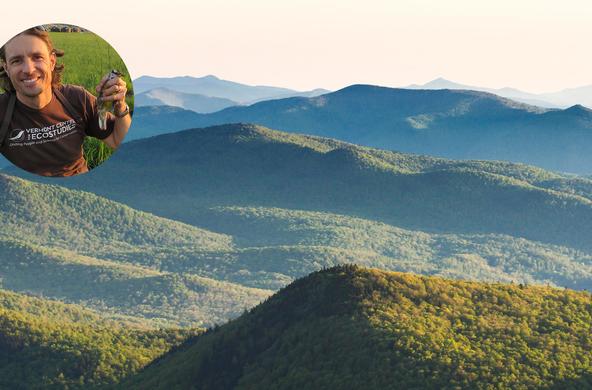As primates, humans evolved as a daylight species. In the developed world, we now regularly subject ourselves to longer days through artificial lighting. Nights are also destined to become brighter as energy-saving LED lights replace the incandescent streetlights of Thomas Edison. As with the addition of novel substances to our air and water, the addition of light to the environment can be regarded as a pollutant. Indeed, documentation of the effects of light pollution are accumulating so rapidly that the subject now has its own acronym—ALAN—for artificial light at night. I have blogged on the impacts of light pollution before; this is an update. See: Is it better to light a single candle than to curse the darkness?
It is not surprising that many of the first studies of light pollution focused on migratory birds, which normally use astronomical light to orient their travel. As the night sky becomes brighter, birds get disoriented. Many are attracted to urban areas, and a significant number succumb to collisions with tall skyscrapers and radio towers that are lighted at night. As roads proliferate on the landscape, streetlights do as well. We are converting much of our habitat to a world of 24-hour activity.
Studies of birds also show disruptions of normal sleep patterns, increased vulnerability to predators, and increasing chemical levels in blood, such as oxalate, that indicate stress. It is the latter that should concern us all. Changes in the levels of endocrine hormones in the blood are associated with cancers in humans. The birds are telling us something.
Recent studies have shown strong correlations between breast and prostate cancer, night-time work and blood hormone levels in humans. One study of nurses suggests that sustained night-shift work may increase the risk of breast cancer by 50 to 100%, associated with the suppression of melatonin and disruption of Circadian rhythms. Across 110 countries worldwide, ALAN explained 79% of the variability in the occurrence prostate cancer.
As with so many studies of occupational effects on health, controlled experiments are difficult to organize—the effects are long-term, we can’t control the subjects, and other factors confound the results. Nevertheless, the increasing reports of hormonal disruption in birds and humans subject to artificial light at night are increasing cause for concern.
Darkness may be our friend.
References
Davies, T.W. and T. Smyth. 2018. Why artificial light at night should be a focus for global change research in the 21st century. Global Change Biology 24: 872-882.
Horton, B.M. and 5 others. 2017. High-intensity urban light installation dramatically alters nocturnal bird migration. Proceedings of the National Academy of Sciences doi: 10.1073/pnas.1708574114
Quyang, J.Q and 7 others. 2017. Restless roots: Light pollution affects behavior, sleep, and physiology in a free-living songbird. Global Change Biology doi: 10.1111/gcb.13756
Rybnikovaa, N.N., A. Haimb, and B.A. Portnova. 2017. Is prostate cancer incidence worldwide linked to artificial light at night exposures: Review of earlier findings and analysis of current trends. Archives of Environmental and Occupational Health 72: 111-122.
Touitou, Y., A. Reinberg, and D. Touitou. 2017. Association between light at night, melatonin secretion, sleep deprivation, and the internal clock. Health impacts and mechanisms of circadian disruption. Life Sciences 173: 94-106.
Zielinska-Dabkowska. K.M. 2018. Make lighting healthier. Nature 553: 272-276.








